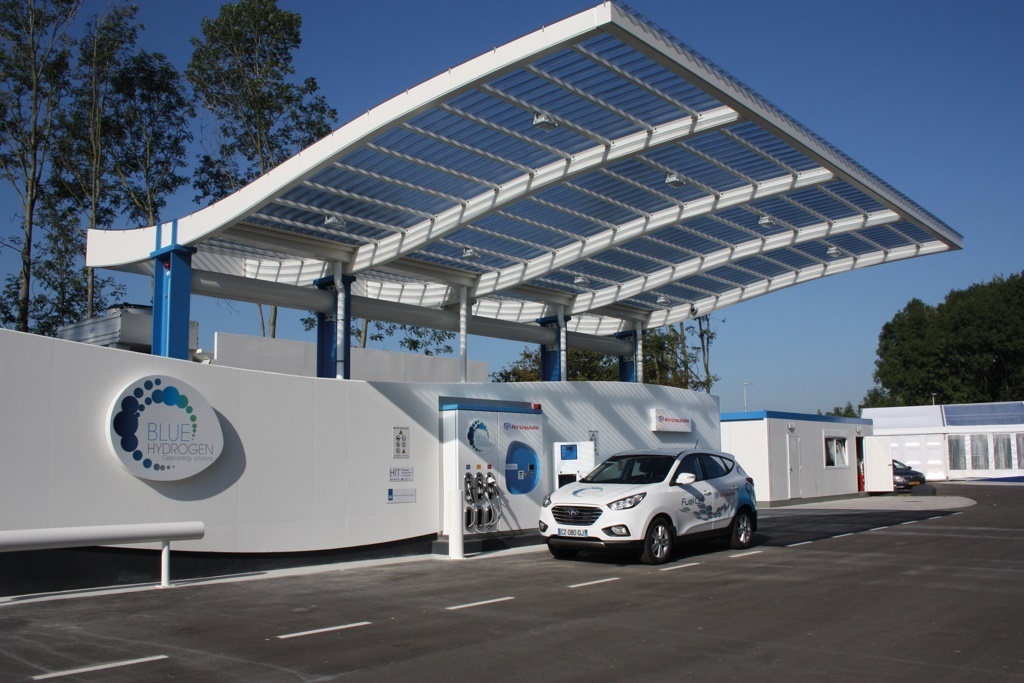In order to reach IMO’s 2050 goal of 50 percent CO2 reduction in emissions from shipping, Tomas Tronstad, managing director at Hyon, said he sees two solutions: Batteries for ferries and short-sea operators; fuel cells and hydrogen for larger powerplant installations, like cruise ships.
Hydrogen is increasingly regarded as a credible option for zero-emission ships if it is produced from decarbonized energy, according to Pierre-Etienne Franc, vice president of Air Liquid’s hydrogen energy world business unit.
He added that alternative options like batteries, LNG, or NH3 (ammonia) are limited and have either significant autonomy limitations (batteries), emit more emissions (LNG) or are more costly (NH3).
Ferries First
Based in Norway, Tronstad said there are many hydrogen-fueled ferry projects as the Norwegian authorities have begun to stipulate zero emission vessels in certain areas, and are requiring hydrogen as a way of stimulating the development of the hydrogen industry in the country.
Hydrogen-run fuel cells are common on buses and trucks, he said, with the hydrogen in pressurized tanks.

Since hydrogen is very light, the tanks are pressurized at 700 bar containing 5 kilos of gas giving an average car a range of some 500 km. He said the tank size was comparable to a standard gas tank.
Hyon is a joint venture between Nel Hydrogen, Hexagon Composites and Powercell of Sweden, thus claiming a one-stop hydrogen and fuel cell solution, targeting marine industries, including cruise lines.
Green Potential
There are generally two ways to produce hydrogen today, with water (HO2) or natural gas (CH4) being the raw materials.
According to Franc, most hydrogen today is produced from fossil fuels, converting natural gas into hydrogen. He said that even that will reduce ship emissions from what it is. But there are roadmaps, he said, to shift the production in coming years to low carbon pathways.
Franc added that Air Liquide, for instance, started a plant in Denmark in early 2018, using wind power to generate hydrogen.
While using natural gas will mean CO2 emissions from the production; using power from renewable sources to split water in an electrolysis process means no CO2 and the resulting hydrogen can be considered renewable as well, according to Tronstad.
“Nel only participates in projects based on renewable energy sources,” he noted.
Tronstad said hydrogen can be considered a “difficult” gas, as it is very light and has very small molecules, but taking that into account, it is not difficult to design safe systems. He said that hydrogen is a very predictable gas and does not pose any greater risks than gasoline or diesel fuel.
Thus, Hyon has received approval-in-principle from DNV-GL for its module-based fuel cell solutions, adapted for maritime use. The approval builds on the MS-100 hydrogen PEM (Proton Exchange Membrane) fuel cell system from PowerCell for general application in ships.
The approval covers smaller modules of just a few hundred kilowatts to multi-megawatt units.
PEM Fuel Cells
Tronstad explained that PEM fuel cells are the standard already used in motor vehicles. He described them as very dynamic, operating effectively at different loads.
“At PowerCell/Hyon we have developed the world’s lightest and most compact marine fuel cell solutions,” he said. “So fuel cells should not be a showstopper for large hydrogen cruise vessels.”
“What needs to be done next is to provide bunkering opportunities and to bring down costs.”
Explained Tronstad: “When you pay for power, you are also paying for the grid, for the infrastructure. We will produce hydrogen using renewable energy, but not from the grid. We will produce the hydrogen where the power is being generated, and then transport the hydrogen to where it will be used. This will reduce costs significantly.”
Meanwhile, in the United States, Nikola Motor Company is rolling out infrastructure for hydrogen production and filling stations (from Nel) for trucks. Maritime bunkering stations may be next.
Produced as a gas, hydrogen can either be compressed or liquefied, said Franc, and as liquid hydrogen is very dense it lends itself for storage in large quantities aboard ships.
“Hydrogen in transport applications based on fuel cells is very efficient and also benefits from the high efficiency of electrical motors,” he said, “but without the drawbacks of battery storage (weight, volume and safety).
“The next step for hydrogen use does not require any change in ship design, only shifting hydrogen to low carbon production pathways.”
Added Tronstad: “Future ships may be larger because they will need bigger tanks to accommodate new fuels, such as hydrogen, methanol and perhaps ammonia, NH3, which has no carbon content.”





